The notion of the twin implies that no single definition of any architectural category exists in isolation. It imagines that architecture is not a state of "being" but rather, one of "becoming". Twins may also not be only binary, or mirrored tectonic siblings, but can be seen to possess multiple relationships and asymmetry iterations. A kaleidoscope-like effect is the point of departure to observe and represent the idea of architecture and its twin. In this project, city of Chongqing is used to test a kaleidoscopic perspective as a multi-mirrored set of elements that are simultaneously fragments and assemblies that overlay hidden or fictional characteristics onto its original, to experience an alternative, perception of the city, that may reveal hidden truths.
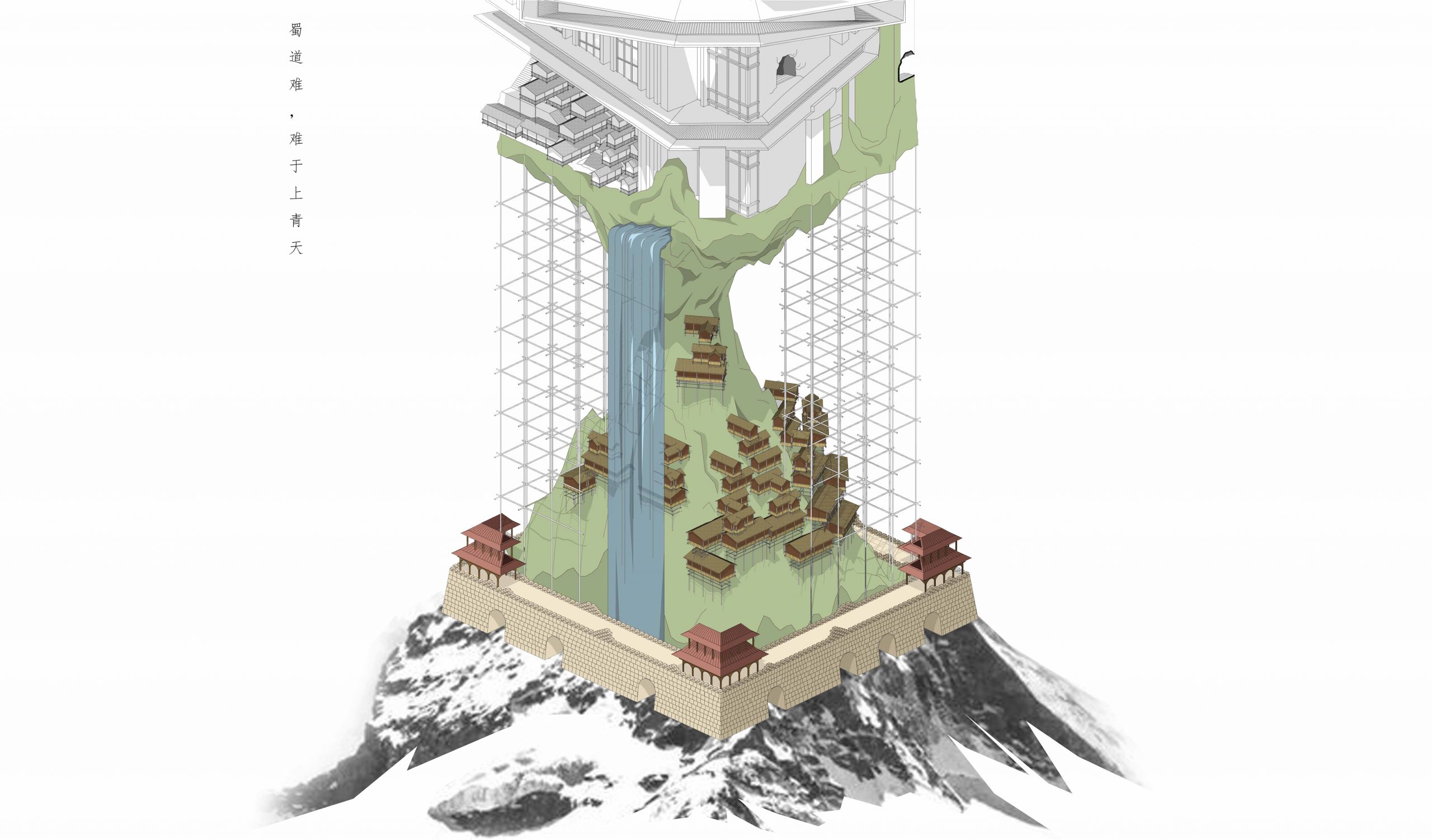
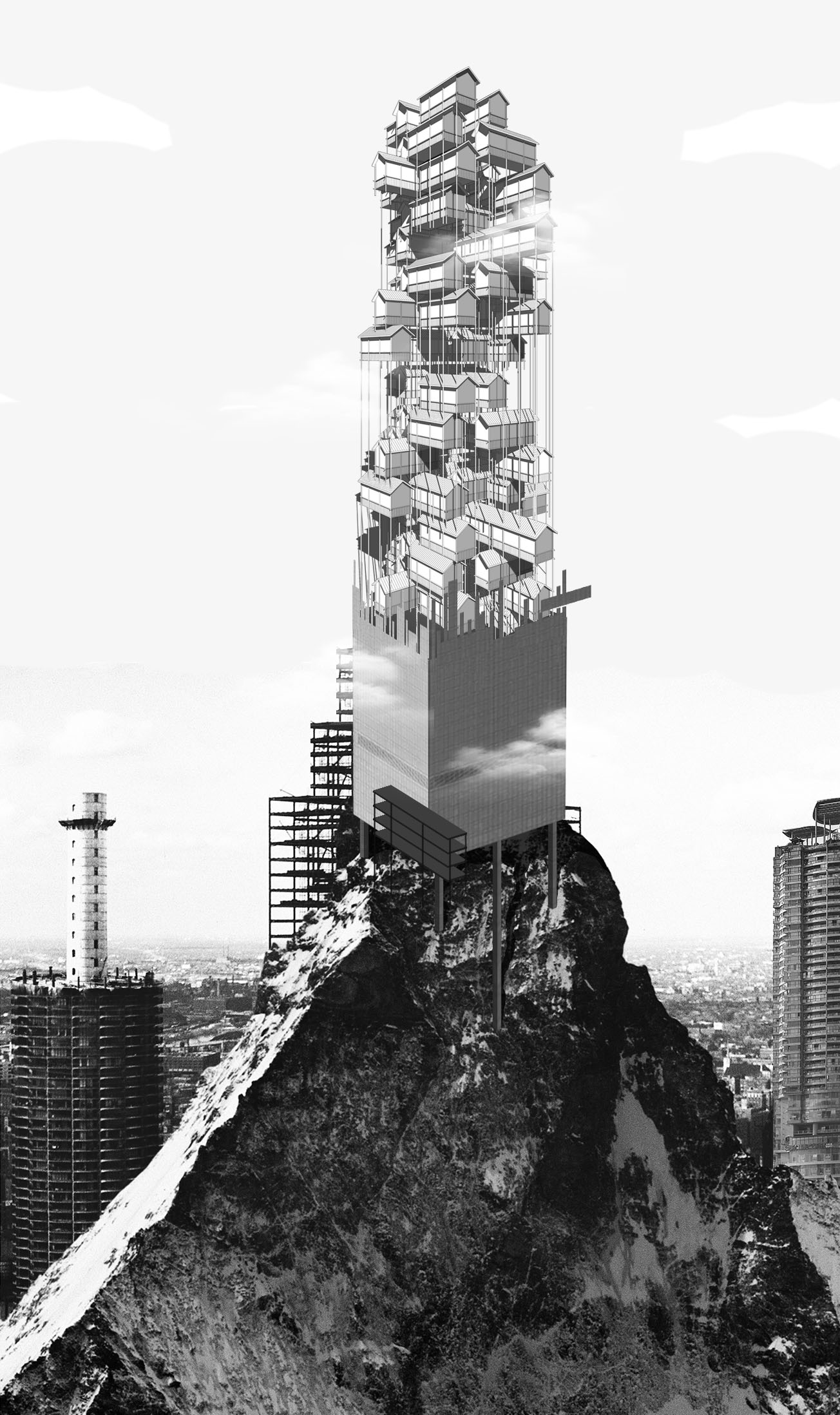
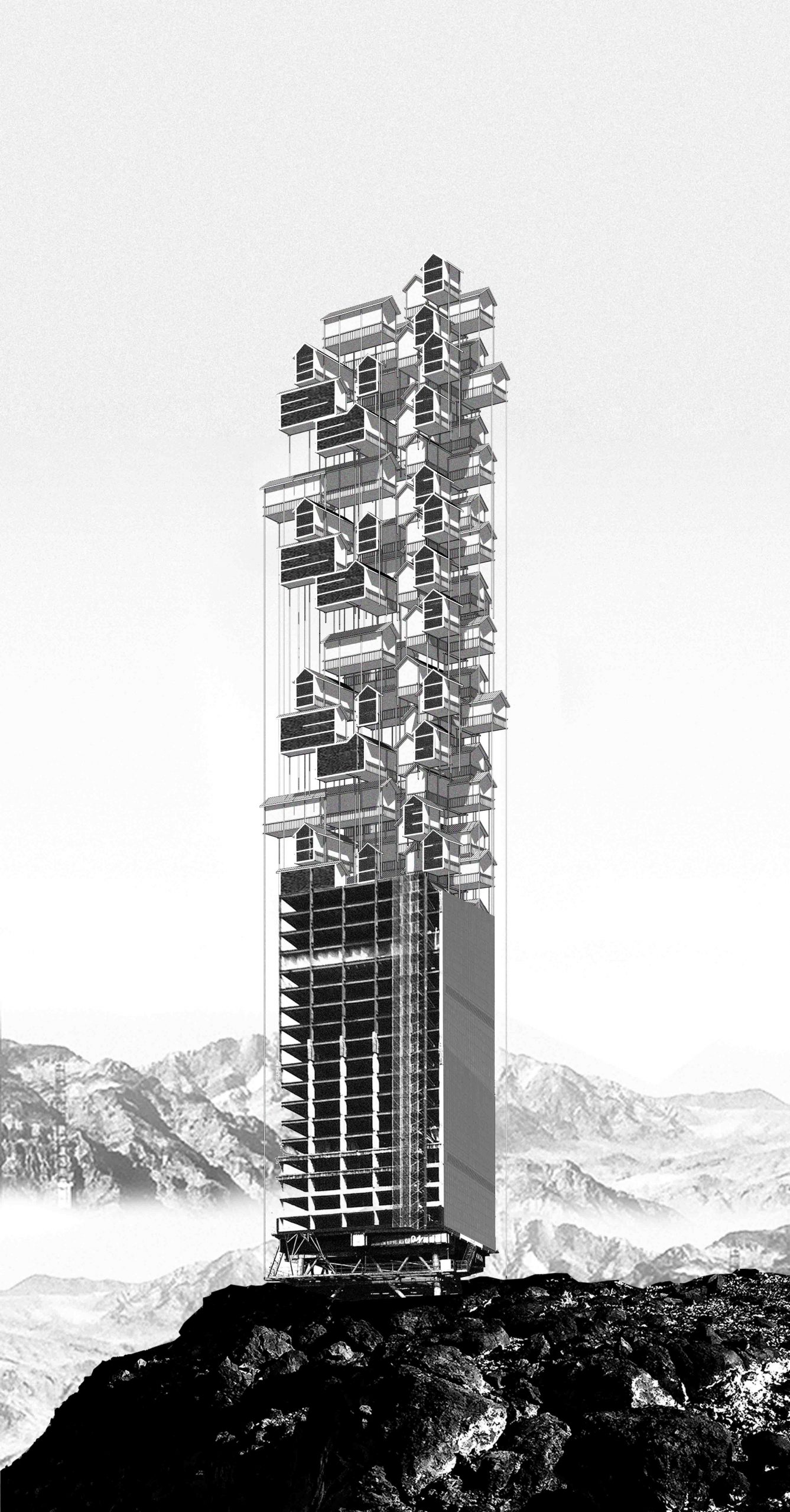
Cantilever structure & skyscrapers : There is an old saying in China, “蜀道难,难于上青天“, in English, “The Sichuan Road What heights !” The road to Sichuan region is Chongqing. Back to the time when the first group of immigrants from central part of China come to Chongqing, in order to accommodate the geographic disadvantage, the ancient architects and carpenters utilized native material to create a structure that allows buildings cantilever large proportion on the mountain and cliff. It’s called Diaojiaolou. From that, cantilever architecture and the Diaojiaolou structure itself have gradually become the unique icon in Chinese architectural history. Even with the fact that today’s building technology can build almost any building in any context, architects and designers who want to make practice in Chongqing, have to learn the principle and knowledge of this Diaojiaolou structure. Because this structure not only support the weight above it, but also support its adjacent neighbor. So one of the reason of why buildings in Chongqing are so close to each other, creating a picture of ultra-density is because they all apply same structure and mutually linked and support. Although Diaojiaolou structure is the cornerstone of architecture in Chongqing, modern material and design, combined with the attempt of maximum space use, disguise this fact, the large, flat face of glass and steel cover the beauty of structure exposure. We can no longer admire the cantilevered and zig-zag space in between buildings. So in this twin, I want to depict a moment that a generic modern high-rise building is unclothing itself, allowing people see its hidden truth. Even though this process might be seen fleeting and unpredictable, my goal of creating this twin is not to design a fixed architectural space, but try to freeze such gesture, admiring the spirit of this architectural type.


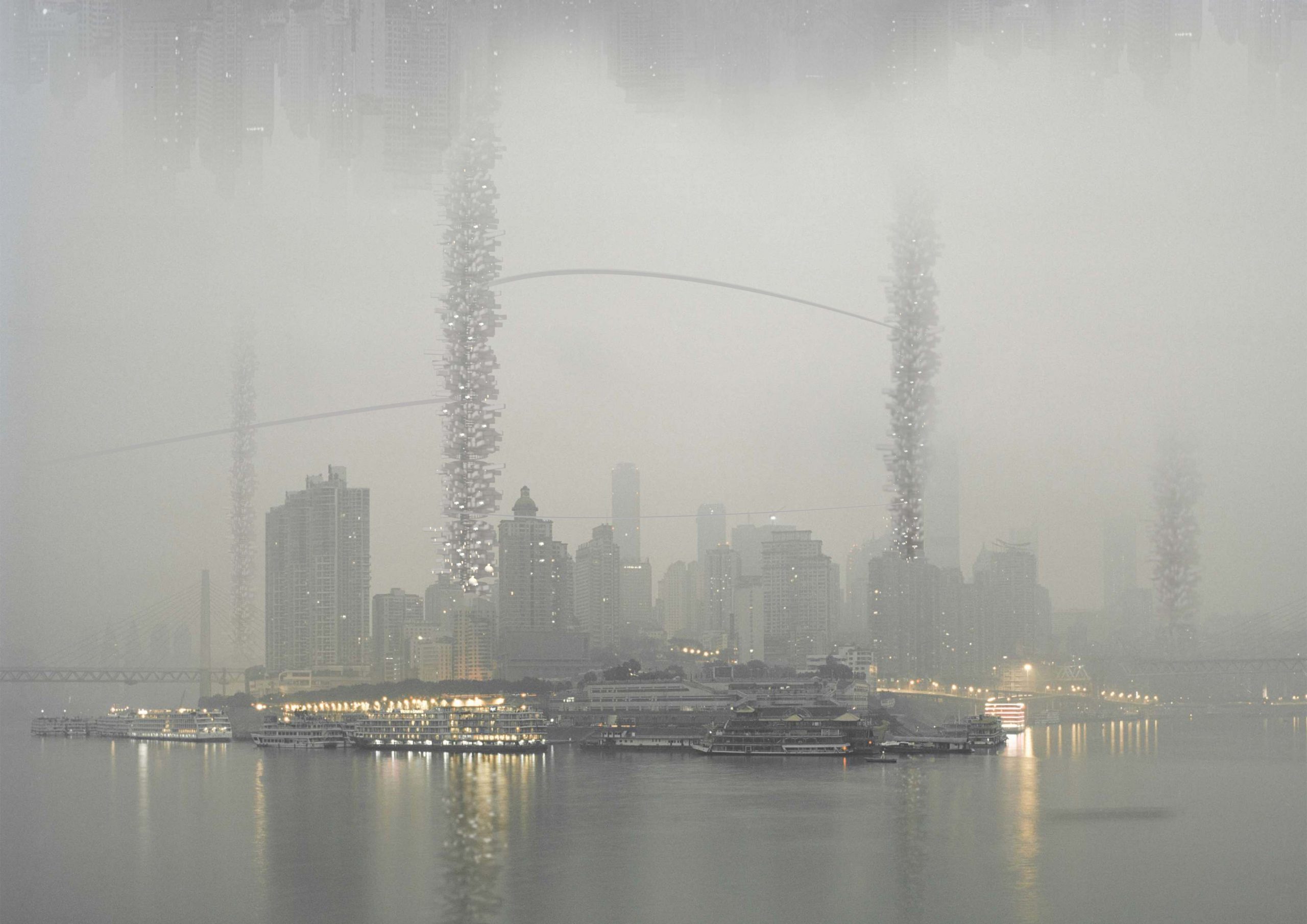

Mega-infrastructure: There are always huge demands of giant architecture to accommodate its blast growing population. Also, because the unique geography require more complicate infrastructures and transportation system to connect different areas within the city. Chongqing is one of the dream lands for those ambitious architects. In this picture you can see in the most prominent position, there are 8 towers, actually 9, the other one is placed perpendicularly on the top of other four towers. This is the newly built Raffles City, the largest and longest “horizontal skyscraper” in the world, designed by Moshe Safdie, the Israeli Canadian architect. If you look toward this building from street view, you would be scared by the huge scale difference caused by this building and its surroundings. Also, the form of this building is so strange and alien compare to other buildings in the city. It’s more an integration of pier, train station, hotel, commercial complex, office and residential. In this twin, I my gesture is making a sarcasm of such fact, that is “the bigger, the better”, which is really a common phenomenon in Chinese architecture industry. So what I have done is creating a more exaggerated and unhuman-scaled building. In this twin, the terrain of the city is folded up, creating an inception-like urban space. Then this vertical giant functions as a huge transportation hub, high-way bridge connected two paralleled worlds and different districts. And the commercial, office and residential are all horizontally placed in these towers grown from the center.


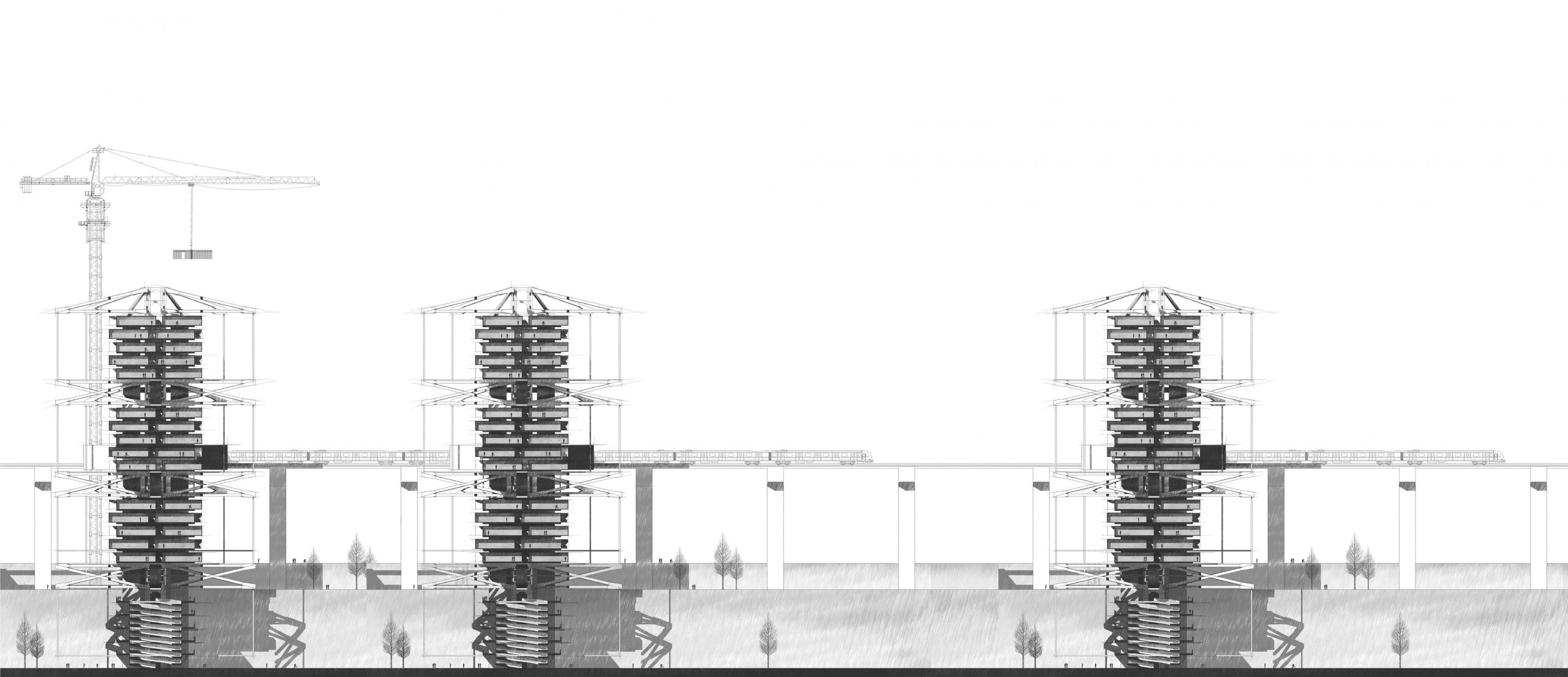

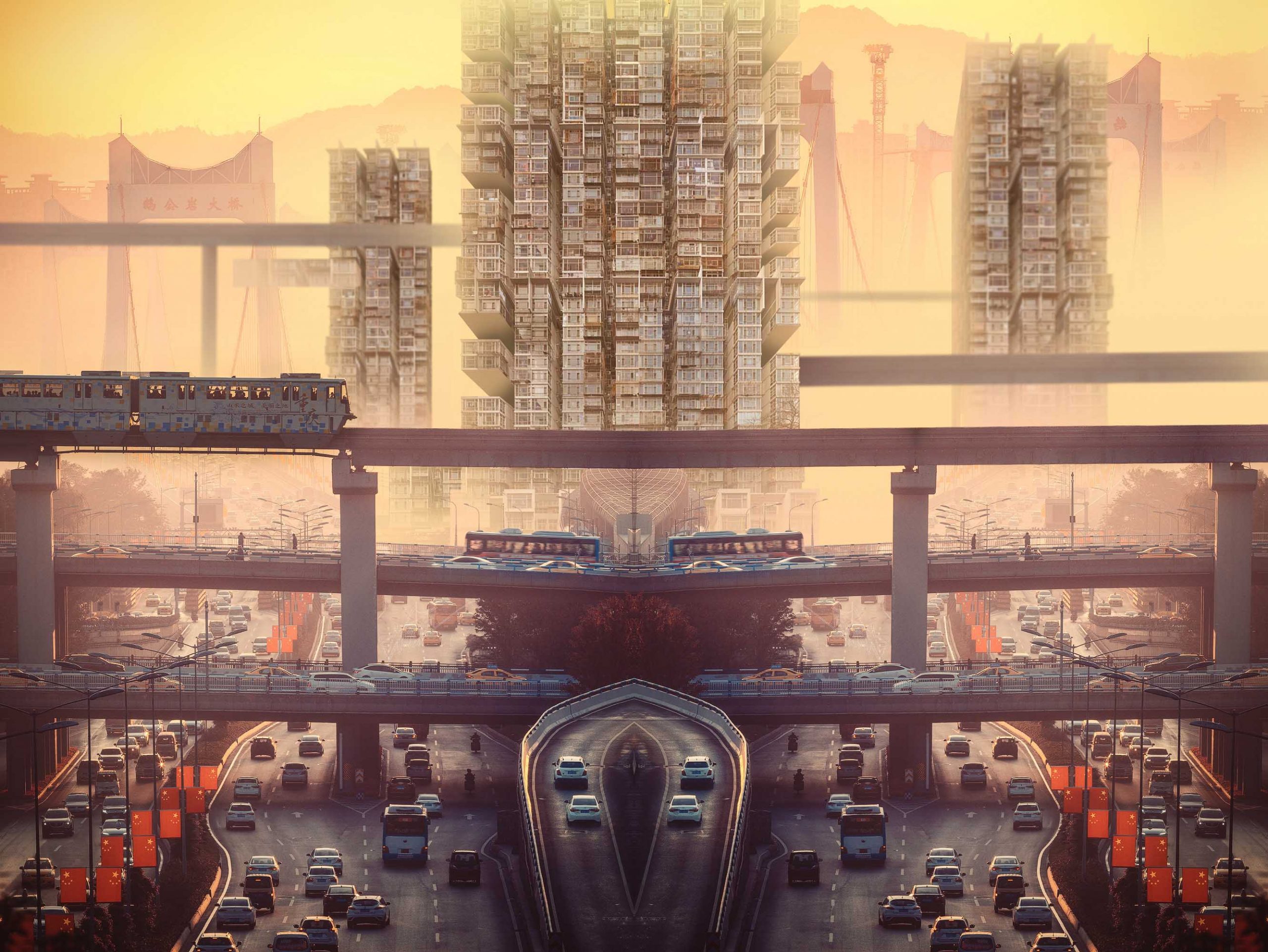

super density & penetrating: The gesture of creating this twin is predicting. Almost every Asian country is on the way of achieving extreme efficiency of living space, which means keep breaking the boundary of minimizing the area of single living unit, Chongqing, as the most populated city in whole country is no exception. The residential areas are becoming denser and denser. The newly built residential tower has been gradually losing the original nature as residence, becoming a cluster of minimal staying space where people only need a bed to stay a night everyday. Also, to accommodate increasing density and expending urban area, plus city’s mountain terrain, public traffic network needs to reach everywhere within the city to meet the demand of daily commute. That’s why the vertical transportation system is so developed in Chongqing like we have seen from science fiction movies. So in this twin, I predict such tendency, creating an infinite growing residential tower, or residential machine by piling shipping containers. These residential machines would be planted more and more in the city, and interlinked by sky train, weaving a bigger transportation web. This is not 100% fictional, the city government has already implemented plans about transforming existing shipping container to temporary accommodation units for migrant workers.

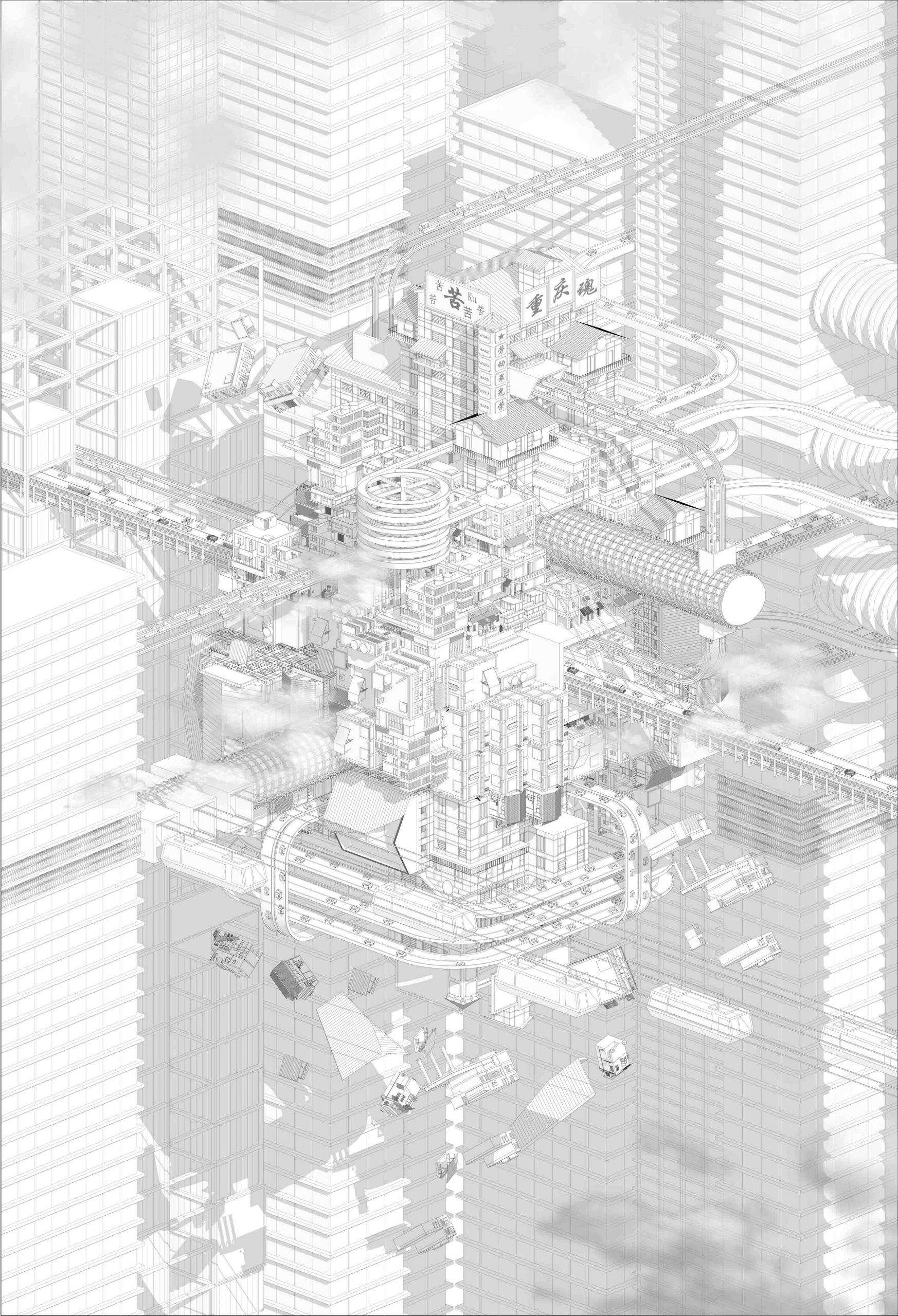

old town: The gesture of creating this twin is making metaphor. The photographs in History Images are of histories, in the form of old town in Chongqing, either being destroyed or created at this juncture in time. They are of past histories, in the form of traditional buildings and neighborhoods, urban fabrics, and natural landscapes, in the process of being erased. They are of the absence of histories, in the form of construction sites, built upon an erasure of the past so complete that one would never know a past had ever existed. And they are of the anticipation of future histories, yet to unfold, in the form of newly built cities. After the economic reform, 1979, history is seen as an enemy in need of dismantling, as summarized in the popular Cultural Revolution slogan, “Smash the Old World, Build the New World”. Presently in China, history as urban form is seen in contradictory terms: as proof of China’s accomplishments and contributions to civilization, yet more often as an inconvenience to urban modernization. Ironically, China’s current economic revolution is facilitating the physical destruction of history that was called for during the Cultural Revolution. From the resulting emptiness the components of China’s new cities are built out of nothing: luxury apartments, shopping centers, supermarkets, widened roads, tennis courts, office blocks, parking lots. To value the demolished old town in Chongqing, I see this old town as a floating engine. It’s closer to human life with small scale buildings and streets and busy commercial, compare to those newly raised cold-blood buildings. At the meantime, this old town machine is keeping contributing its power and energy to this “new city”




